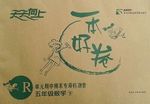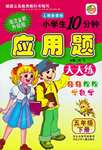题目内容
A study of English learning problems was carried out among a total of 106 foreign students. It shows that most students considered understanding spoken English to be their biggest problem on arrival. This was followed by speaking. Writing increased as a problem as students discovered difficulties in writing papers that they were now expected to hand in. Reading remained as a significant(显著的)problem.
The information gained helped us in determining where special attention should be paid in our course. Although many students have chosen to join the course with a reasonable motivation(动机), we considered it important to note what seemed to encourage interest. Nearly all the students have experienced some kind of grammar-based English teaching in their own country. To use the same method would be self-defeating because it might reduce motivation, especially if it has failed in the past. Therefore a different method may help because it is different.
Variety of activity was also seen as a way of maintaining(保持)or increasing motivation. Several years ago we had one timetable that operated throughout, but we soon found that both the students and the teachers lost interest by about halfway through the ten weeks. This led us to a major re-think, so finally we brought it into line with the expressed language needs of the students.
65.What is the text mainly about?
A.Foreign students have more problems.
B.There are many ways to improve English.
C.Teaching should meet students’ needs.
D.English learning problems should be studied again.
66.Writing became a bigger problem when foreign students ___________.
A.had to write their papers
B.became better at speaking
C.became less interested in reading
D.had fewer problems with listening
67.We may infer from the last two paragraphs that ___________.
A.different teaching methods should be used
B.grammar-based teaching seems to be encouraging
C.English courses are necessary for foreign students
D.teaching content should be changed halfway
68.The word “it” underlined in the last paragraph refers to “___________”.
A.re-think
B.activity
C.motivation
D.timetable
65.C
解析:文章用一个关于外语学习的调查引入,说明了我们对所开的课程不仅要从学生哪方面有困难,还要通过采用不同的教学方法,多种活动以及改变时间表来保持和提高学生的学习兴趣,从中可总结出C项为正确选项.
66.A.
解析:短文第一段中:Writing increased as a problem as students discovered difficulties in writing papers that they were now expected to hand in..可得知本题的正确选项为A.
67. A
解析:.从短文的最后两段的陈述中可以得知选项B,C,D与文中内容不符.而短文倒数第二段中:To use the same method…Because it is difficult. 可以推断出本题的正确选项.
68.D.
解析:本题为词义猜测题。首先it所在的句中bring…into line with意思是“与…一致”;然后,从上文Several years ago we had one timetable that operated throughout, but….through the ten weeks.可以得知it指的是timetable.

 天天向上一本好卷系列答案
天天向上一本好卷系列答案 小学生10分钟应用题系列答案
小学生10分钟应用题系列答案BEIJING—Eating at a Beijing restaurant is usually an adventure for foreigners, and particularly when they get the chance to order “chicken without sex life” or “red burned lion head”.
Sometimes excited but mostly confused, embarrassed or even terrified, many foreigners have long complained about mistranslations of Chinese dishes. And their complaints are often valid(有效), but such an experience at Beijing’s restaurants will apparently soon be history.
Foreign visitors will no longer, hopefully, be confused by oddly worded restaurant menus in the capital if the government’s plan to correctly translate 3,000 Chinese dishes is a success and the translations are generally adopted.
The municipal(市政) office of foreign affairs has published a book to recommend English translations of Chinese dishes, which aims to help restaurants avoid bizarre translations. “It provides the names of main dishes of famous Chinese cuisines in plain English,” an official with the city’s Foreign Affairs office said. “Restaurants are encouraged to use the proposed translations, but it will not be compulsory.” It’s the city’s latest effort to bridge the culture gap for foreign travelers in China.
Coming up with precise translations is a daunting task, as some Chinese culinary(烹饪) techniques are untranslatable and many Chinese dishes have no English-language equivalent. The translators, after conducting a study of Chinese restaurants in English-speaking countries, divided the dish names into four categories: ingredients, cooking method, taste and name of a person or a place. For some traditional dishes, pinyin, the Chinese phonetic system, is used, such as mapo tofu(previously often literally translated as “beancurd made by woman with freckles”), baozi(steamed stuffed bun) and jiaozi(dumplings) to “reflect the Chinese cuisine culture,” according to the book.
“The book is a blessing to tourist guides like me. Having it, I don’t have to rack my brains trying to explain Chinese dishes to foreign travellers,” said Zheng Xiaodong, a 31-year-old employee with a Beijing-based travel agency.
“I will buy the book as I major in English literature and I’d like to introduce Chinese cuisine culture to more foreign friends,” said Han Yang, a postgraduate student at the University of International Business and Economics.
It is not clear if the book will be introduced to other parts of China. But on Tuesday, this was the most discussed topic on weibo.com, China’s most popular microblogging site.
【小题1】What’s the best title of the passage?
| A.An adventure for foreigners who eat in Beijing. |
| B.Confusing mistranslations of Chinese dishes. |
| C.Chinese dishes to have “official” English names. |
| D.The effort to bridge the culture gap. |
| A.some Chinese dishes are not well received |
| B.some Chinese dishes are hard to translate |
| C.some Chinese dishes are mistranslated |
| D.some Chinese dishes are not acceptable |
| A.Recommending a book on Chinese dishes. |
| B.Advocating(提倡) using precise translation for Chinese dishes. |
| C.Publishing a book on China’s dietary habits. |
| D.Providing the names of main Chinese dishes. |
| A.confusing | B.disappointing | C.discouraging | D.Worthwhile |
 children bye age eight were much more familiar with hurmans for television shows and cideo games than with common wildlife. Without modern technology ,a amall pond could be an amazing world filled with strange and beautiful plants, insects,birds,and animals. When we lack meaningful interaction (交互) with the world around us, and sometimes ecen with our families and friends , we seek to understand and communicate with things that exist only in our imaginations or on a computer screen
children bye age eight were much more familiar with hurmans for television shows and cideo games than with common wildlife. Without modern technology ,a amall pond could be an amazing world filled with strange and beautiful plants, insects,birds,and animals. When we lack meaningful interaction (交互) with the world around us, and sometimes ecen with our families and friends , we seek to understand and communicate with things that exist only in our imaginations or on a computer screen